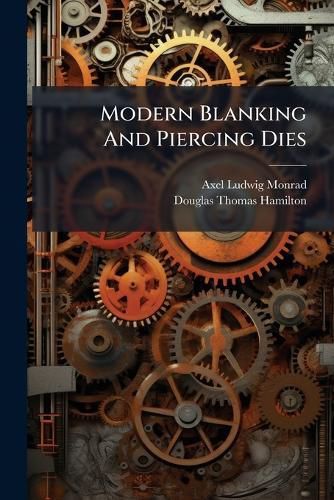Readings Newsletter
Become a Readings Member to make your shopping experience even easier.
Sign in or sign up for free!
You’re not far away from qualifying for FREE standard shipping within Australia
You’ve qualified for FREE standard shipping within Australia
The cart is loading…






Explore the intricacies of metalworking with "Modern Blanking And Piercing Dies" by Axel Ludwig Monrad and Douglas Thomas Hamilton. This comprehensive guide delves into the design, construction, and application of blanking and piercing dies, essential tools in modern manufacturing. Gain valuable insights into the techniques and principles that underpin the creation of precise and efficient metal components. Whether you're a seasoned engineer or a student eager to learn, this book provides a detailed look at the practical aspects of tool and die making.
Discover the methods for optimizing die performance, reducing material waste, and enhancing the overall quality of manufactured parts. "Modern Blanking And Piercing Dies" is a valuable resource for anyone involved in the metalworking industry, offering a blend of theoretical knowledge and real-world applications that will improve your skills and understanding of these critical manufacturing processes.
This work has been selected by scholars as being culturally important, and is part of the knowledge base of civilization as we know it. This work was reproduced from the original artifact, and remains as true to the original work as possible. Therefore, you will see the original copyright references, library stamps (as most of these works have been housed in our most important libraries around the world), and other notations in the work.
This work is in the public domain in the United States of America, and possibly other nations. Within the United States, you may freely copy and distribute this work, as no entity (individual or corporate) has a copyright on the body of the work.
As a reproduction of a historical artifact, this work may contain missing or blurred pages, poor pictures, errant marks, etc. Scholars believe, and we concur, that this work is important enough to be preserved, reproduced, and made generally available to the public. We appreciate your support of the preservation process, and thank you for being an important part of keeping this knowledge alive and relevant.
$9.00 standard shipping within Australia
FREE standard shipping within Australia for orders over $100.00
Express & International shipping calculated at checkout
Explore the intricacies of metalworking with "Modern Blanking And Piercing Dies" by Axel Ludwig Monrad and Douglas Thomas Hamilton. This comprehensive guide delves into the design, construction, and application of blanking and piercing dies, essential tools in modern manufacturing. Gain valuable insights into the techniques and principles that underpin the creation of precise and efficient metal components. Whether you're a seasoned engineer or a student eager to learn, this book provides a detailed look at the practical aspects of tool and die making.
Discover the methods for optimizing die performance, reducing material waste, and enhancing the overall quality of manufactured parts. "Modern Blanking And Piercing Dies" is a valuable resource for anyone involved in the metalworking industry, offering a blend of theoretical knowledge and real-world applications that will improve your skills and understanding of these critical manufacturing processes.
This work has been selected by scholars as being culturally important, and is part of the knowledge base of civilization as we know it. This work was reproduced from the original artifact, and remains as true to the original work as possible. Therefore, you will see the original copyright references, library stamps (as most of these works have been housed in our most important libraries around the world), and other notations in the work.
This work is in the public domain in the United States of America, and possibly other nations. Within the United States, you may freely copy and distribute this work, as no entity (individual or corporate) has a copyright on the body of the work.
As a reproduction of a historical artifact, this work may contain missing or blurred pages, poor pictures, errant marks, etc. Scholars believe, and we concur, that this work is important enough to be preserved, reproduced, and made generally available to the public. We appreciate your support of the preservation process, and thank you for being an important part of keeping this knowledge alive and relevant.